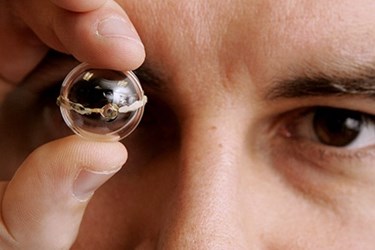Researchers 3D Print LED Into Contact Lens
By Chuck Seegert, Ph.D.

As a proof-of-concept for new 3D printing techniques, a Princeton team has developed a contact lens that projects beams of light. The researchers embedded a light-emitting diode (LED) into a contact lens, which demonstrated the flexibility and power of their new 3D printing approach.
The acceleration of 3D printing and additive manufacturing has been impressive, and the technique has been used in a multitude of existing applications. While the manufacturing technique is versatile, 3D printing is generally limited to specific plastics, passive conductors, and a few biological materials. The strength of the method lies in its ability to build customized designs and to create molds and patterns for rapid prototyping.
Creating methods of pushing beyond these limitations has been the work of a team at Princeton, according to a recent article from News at Princeton. The team showcased the capabilities of their new 3D printing approaches by developing a hard-plastic contact lens with an LED embedded within it. The researchers used nanoparticles, or quantum dots, as ink to create the LED on the contact lens. By adjusting the size of the particle, they were capable of generating orange and green light.
The goal of the team’s work was to 3D print diverse classes of materials that are generally not compatible with each other, according to a study published by the team in Nano Letters. This capability would enable the freeform manufacturing of active electronics with interwoven geometries. Devices produced as part of the study were composed of five different materials, including emissive semiconducting inorganic nanoparticles, elastomeric matrices, organic materials for charge transport, solid and liquid metal for leads, and an ultraviolet-adhesive substrate layer.
To achieve this level of flexibility, the team developed and built a custom 3D printing system. The instrument was a mix of off-the-shelf components combined with highly customized parts, and cost approximately $20,000. While the team is excited about their progress, they were quick to point out the value of existing fabrication methods. Using lithography to achieve high throughput electronics manufacturing is a very reliable process, and the team envisions that their 3D printing technique will be used to complement existing manufacturing methods.
In other areas of 3D printed research, medical device engineers are finding ways to combine drugs and resorbable printed devices. This unique combination could allow implantable bioactive devices to be developed in customizable manner.
Image Credit: Frank Wojciechowski, Princeton University
